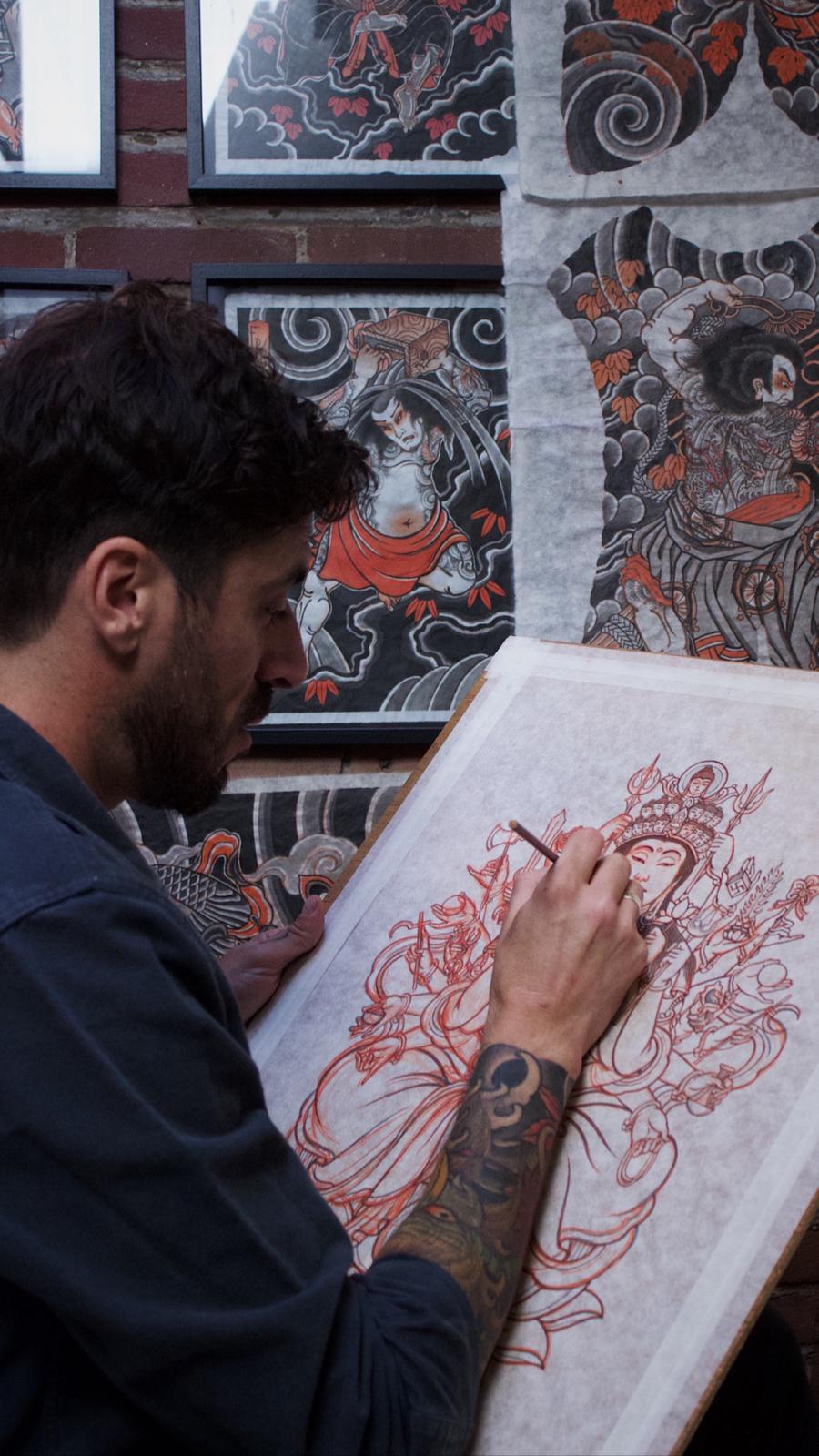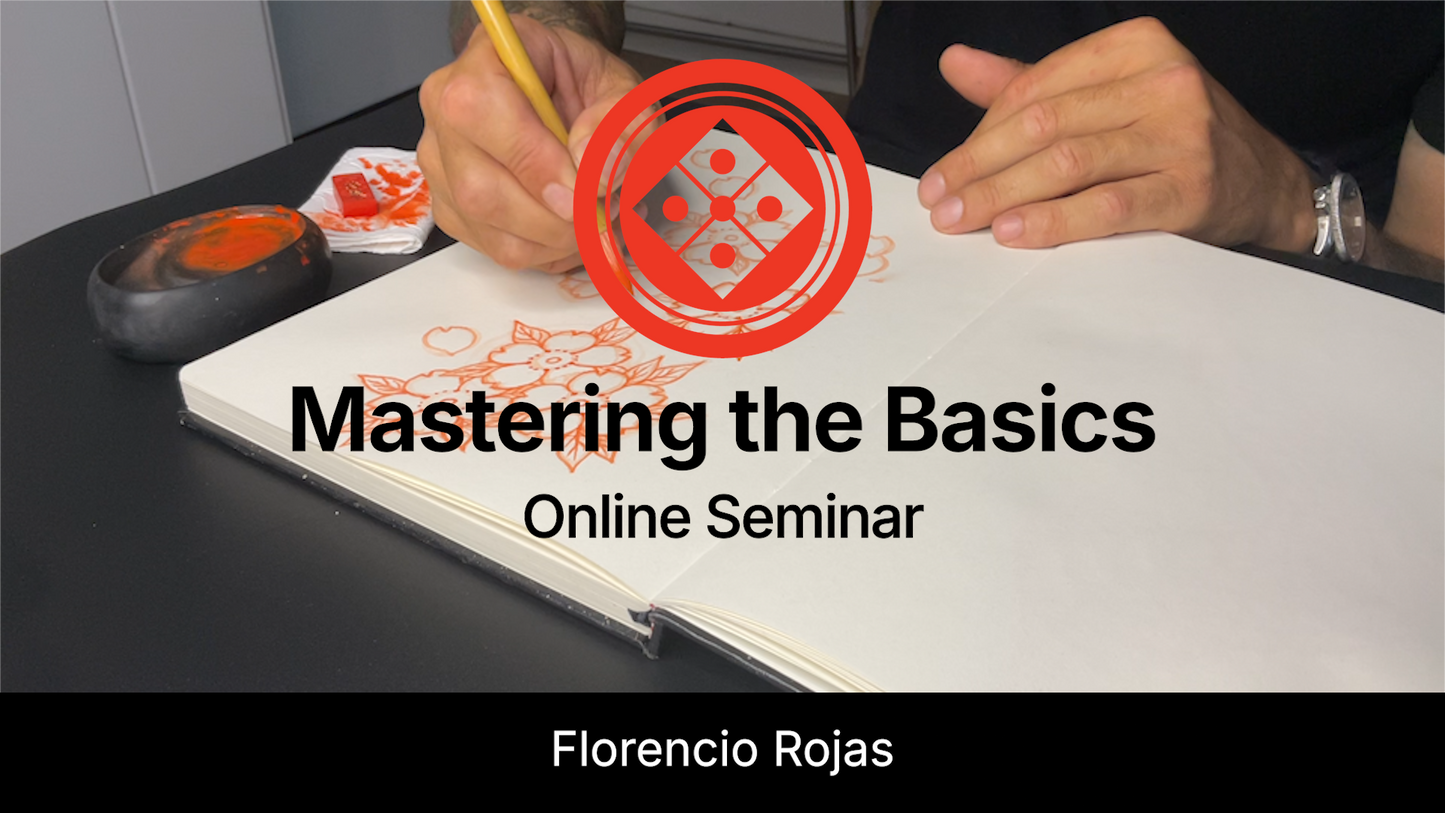
Mastering the Basics
Mastering the Basics is an introductory course in Japanese drawing that teaches students not only how to draw, but how to see.
Beginning with essential forms such as flowers, the course progresses to traditional subjects like hannya mask, koi fish, snakes, and dragons.
And ultimately leads to the study of composition where students learn to bring together flowers, main subjects, and backgrounds into balanced and meaningful works.
Description of the course
Mastering the Basics: is an introductory course that guides students through the foundations of Japanese drawing by focusing on structure, form, and meaning. In this course, students won’t just learn how to draw they will learn how to see. Each drawing is approached through a traditional Japanese lens, honoring not only technique but the intention and spirit behind the subject.
We begin by learning to see through the image to discover the internal structure and basic forms that give life to a Japanese drawing. students will explore composition, proportion, and flow. As we progress, we work with traditional Japanese methods and gain insight into the tools and materials commonly used in Japanese painting such as sumi ink, washi paper, and brushwork techniques.
This course is unique in that it connects technical drawing skills with cultural understanding. Students learn not only how to draw, but why a drawing is made a certain way exploring the symbolic and aesthetic principles that shape traditional Japanese art.
New recorded lessons are released every Sunday, and each session remains available for students to watch anytime, making it easy to learn at your own pace.
The basics of Flowers
-

Course 1: Maple Leaves (Momiji)
We’ll break down the Momiji’s pointed, star-like form into simple shapes so you can draw it with confidence.
-

Course 2: Cherry Blossoms (Sakura)
We’ll simplify the Sakura’s soft, five-petal shape to reveal the structure that makes it so balanced.
-

Course 3: Peonies (Botan)
We’ll untangle the Botan’s layers of petals by finding the clear framework beneath them..
-

Course 4: Chrysanthemums (Kiku)
We’ll decode the Kiku’s many petals by starting from its simple, central structure.
Simple subjects
-

Course 5: Koi fish
-

Course 6: Hannya mask
-

Course 7: Oni
-

Course 8: Dragon heads
Simple subjects to complex drawing
-

Course 9: Tiger Heads
-

Course 10: Foo dogs Heads
-

Course 11: Full tigers
-

Course 12: Full Foo Dog (karashishi)
-

Course 13: Cranes (tsuru)
-

Course 14: Hawk (Taka)
-

Course 15: Fenix (Hō-ō)
-

Course 16: Kirin
-

Course 17: Snake(hebi)
-

Course18: Dragon (Ryu)
Master Backgrounds: Supporting the Subject
-

Course 19: Background
Masteing the Basic: Painting
-

Course Hannya painting
Plus Modules
-

Paper prep, sizes and quality
-

Painting Sumi Dragon
more About the course
Requirements, Plan,Community & Grading
Weekly Practice requirements
To build strong foundational skills, students are expected to:
• Practice 10 minutes per day, 5 days per week (minimum)
• Upload progress images or sketches each week to the course platform community
Basic & Plus plan
Basic Plan
In the Basic Plan, you’ll master the foundations of Japanese drawing: structure, form, balance, and composition.
You’ll learn how to design flowers, dragons, snakes, koi fish, and other traditional subjects understanding the principles that make these artworks come alive. Perfect for building a strong base in drawing.
Plus Plan
The Plus Plan includes everything from the Basic Plan, plus a complete painting course.
You’ll learn which traditional Japanese materials to use, how to paint on washi paper, how to prepare and treat the paper, and step-by-step methods for creating authentic Japanese paintings using traditional techniques. Ideal if you want to bring your drawings to life with color and texture.
Community Involvement
All students have access to the course community space within the app:
• Share weekly practice drawings
• Give and receive feedback from peers
• Engage in discussion and visual critiques
Active participation in the community is encouraged and contributes to your overall progress.
Grading and Assessment
This course is not based on grades or formal evaluation. Instead, it is rooted in personal progress, consistent practice, and deepened understanding. The aim is for each student to become their own best observer — learning to see how much they’ve grown, and where they are headed next.
This process is a mirror. Over time, students will clearly see the difference between their early drawings and what they’re capable of after weeks and months of dedicated practice. The true assessment is the transformation they will recognize in their own work.
Mastering the basics - Online Japanese Art Seminars
Mastering the basics - Online Japanese Art Seminars
Couldn't load pickup availability



























